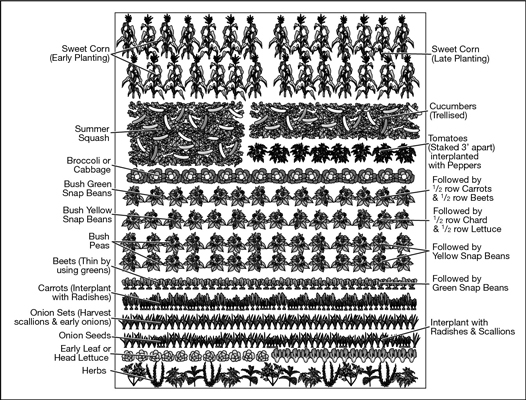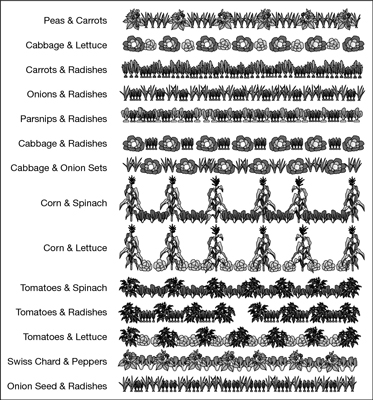The best advice for planning your first vegetable garden is to start small. Just be sure you locate your garden in a sunny spot where expansion is possible. As for actual size, it depends on what you want to grow. Here's what you can put in the following standard-size gardens:
A 6 x 8 foot plot can support a couple tomato plants, maybe some bush beans, and some lettuce.
A 10 x 18 foot plot can hold all that, plus a couple space-consuming squash plants and cucumbers, and maybe some carrots or beets.
A 20 x 24 foot plot can hold all that, plus peppers, leeks, broccoli, turnips, and maybe some herbs.
A 40 x 60 plot allows you more of everything, plus some bigger items, such as corn (corn isn't worth growing unless you can have a dozen or more plants because otherwise they don't pollinate or pollinate completely, and you end up harvesting gap-toothed ears) and asparagus or rhubarb.
Sketch out your vegetable garden plan on paper before planting. Figure out how much space to allot to individual plants — and don't forget to allow for space between the rows, or paths, so you can tend the plants. (Mature sizes of various vegetable varieties are noted on seed packets and often in catalog descriptions.)
Allow for succession planting: If something is harvested early in the summer, lettuce, say, or peas, you can then free up that space for another crop, such as carrots. Succession planting is a good trick, but to pull it off, you may need to do some research as well as some trial and error — and be willing to invest the time and effort.
>
 >
>
Garden plan showing succession plantings.
You could also plan for a constant vegetable harvest by intercropping, or interplanting. This method is simple: Just have two different plants share the same part of the garden in an alternating or checkerboard pattern. This setup can look rather nifty, but it has practical advantages as well. Smaller, faster-maturing plants can grow with larger, slower-growing ones and so you always have something to harvest. And plants that appreciate a little shade can grow in the shelter of taller ones (have pole beans next to lettuce or spinach, for example).
>
 >
>
Garden plan showing interplanting.
>
dummies
Source:http://www.dummies.com/how-to/content/designing-your-vegetable-garden.html
No comments:
Post a Comment